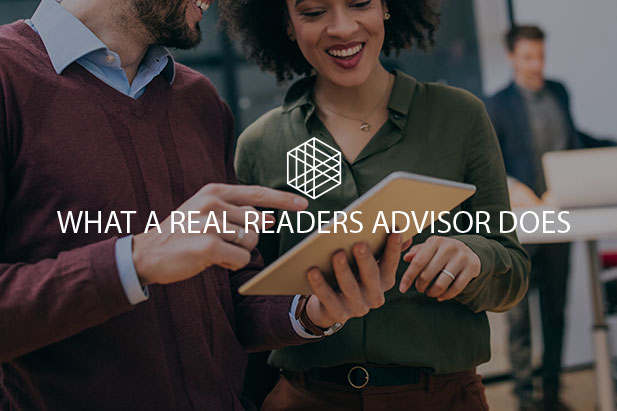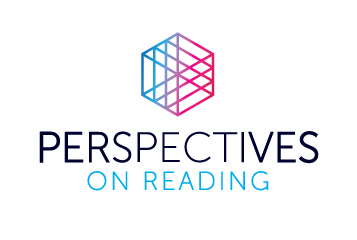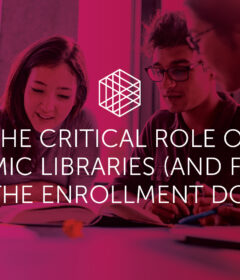Finding a “good book”: What a real readers advisor does

By Mary Chelton, Professor Emeritus | March 2019
“Readers advisor” (RA) is a library term for somebody who can help a reader find a book that person would like to read. It is an art form which involves not only an understanding of a reader’s preferences, mood and prior reading experiences good and bad, but also how to get readers to convey all of this in very little time, after which possible matches can be found and suggested.
“Seeing reluctant readers’ eyes light up when I take the time to learn their interests and introduce them to books in those areas is enormously satisfying. Encouraging them to check out the audio versions and read along with the narrator also makes their assignments less of a chore.”
Lynne Welch, Reference Librarian
Herrick Memorial Library (OH)
Readers are mercurial, and their preferences are situational. They don’t want the same thing for the beach as for going to the hospital, for example. They are often biased against genres, topics, an author’s gender and, even better, they will often say they like everything when they don’t. Most importantly, what a reader thinks is “good” has almost nothing to do with literary quality, critical acclaim or what the RA thinks is good. It is personal and idiosyncratic, so a good RA has to be very egalitarian toward readers, understanding that their so-called quirks rule both the interaction and the follow-up suggestions.
What readers like
Getting quickly to the heart of what someone may like to read involves understanding what appeals to readers, like happy endings or sad ones; fast-paced or slow; contemporary, past or future settings; lots of romance or almost none; male or female protagonists; violent or non-violent; emotional or cerebral; etc. Humor is particularly important because it is possibly the most idiosyncratic of all appeal factors. People just do not find the same things funny, and this carries over to their reading in unanticipated ways. The satiric, albeit hilarious, tone of Southern Ladies and Gentlemen by Florence King, for example, may not appeal to some Southerners who may feel made fun of, even though she’s a Southerner herself.
Terry Lucas, Director
Shelter Island Public Library (NY)
Readers are also sensitive toward how things are published. Some avoid short stories; others science fiction, even though the stories in both categories might otherwise seem to appeal to them. Some only read fiction and others only nonfiction, which is why there is growing interest in nonfiction that reads like fiction rather than purely information books. Readers who like audiobooks often favor certain narrators, and some only want to read what they perceive as trendy. Some readers like electronic books; others only print, etc. The list can seem daunting.
After years of hit or miss attempts to navigate this minefield of reader interests, and mistakenly thinking RAs can interview readers as if their reading interests were reference questions, RAs have developed an arsenal of techniques that range from direct face-to-face interactions to indirect ones such as website queries and displays. The key to all of these techniques is an understanding of why and how readers select books for themselves and how to make clear to them the basis on which matched suggestions are made. For example, the RA can do various lists and displays on the same topic from different perspectives that range from the general to the specific: 1) If you like legal thrillers, try…; 2) If you like John Grisham, try…; or 3) If you like female prosecutors, try…
Direct readers advising techniques
Adults and teens were the easiest for me since they can tell you what they like and don’t like, tell you what books they have enjoyed in the past. I read YA heavily and always made a note of who I thought might like to read the book. Listening to the patron, reading outside of your own box of favorites and thinking on your feet are the three tools I feel are most helpful for matching readers and books.”
RoseMary Ludt, Editor-in-Chief
VOYA Magazine
Direct readers advising techniques include face-to-face and face-to-groups. In face-to-face interactions, the RA asks an individual reader to tell them about something they’re read and liked or disliked, whether they want something similar or different, what they’re in the mood for, etc.
Even though it is often done by reference librarians, finding out what a reader wants is qualitatively different from a reference interview. In this interaction, the reader takes the lead; in the reference interview, the librarian does. What is similar in both is that the RA needs to know where to find the information once he or she understands what the person is after. A good RA keeps all these resources handy because it is impossible to depend solely on memory or personal preference to help readers. One of the big myths of readers advisory services is that an RA has to have read everything before being able to help readers, which is an impossible task. While readers might be justifiably suspicious of an RA who quite obviously does not read at all, because they will perceive this as ignorance of the reading experience, there is much more to being a competent RA than just being well read.
RA resources have some limitations. Historically, they have been organized around themes, topics, settings, awards, gender or occupation of the protagonist, genre, etc. These are useful for limiting suggestions to the reader’s “ballpark,” but they do not help with appeal. Sometimes, appeal can be inferred from annotations or reviews, if they are included in the resource. Lack of indexing by appeal is one of the most frustrating gaps in good RA practice.
Face-to-group RA interactions usually involve a presentation about a book to a group of people, either by the RA librarian, or by one of the group members who has been assisted by the RA librarian. These interactions also involve organizing, sponsoring and referring people to reading groups, regardless of whether the RA librarian is the presenter. Support for reading groups is a major component of RA services.
Group RA services also include author visits. Readers usually love to meet favorite authors and find out how they work, what they look like in person, etc. Arranging such public programs, or arranging online interviews with reader groups, are definitely part of RA services.
Indirect readers advising techniques
Joyce Saricks, Former Librarian
Downers Grove Public Library (IL)
Indirect RA includes displays, lists, websites—all kinds of services where the reader encounters the advice without the person giving it. For example, the Brooklyn (NY) Public Library has a list of “Staff Picks” with book covers shown on the entry page to their catalog. Other catalog enhancements such as social tagging are also forms of indirect RA that get around more formal traditional descriptions of books often less accessible to readers.
There is also an intermediate form of indirect RA where the RA and reader interact online, but do not meet face to face. These techniques mostly use various forms of social media, and include things like wikis, blogs and reader reviews. Online reader reviews are almost as important a source of information for a reader trying to decide whether to read something as a descriptive annotation. They also supply useful quotes for RA librarians preparing book presentations for readers.
Readers advising summed up
Crystal Faris, Director of Youth & Family Engagement
Kansas City Public Library
Good readers advisors base activities on knowledge of how readers select books for themselves, letting clues from readers guide them. While there are always readers who want the latest bestseller from the New York Times Book Review (which should be displayed prominently), or the newest book acquired by the library, others will be more elusive and demand multiple approaches from the arsenal. Readers advising encourages browsing at least as much or more than face-to-face interaction with RA librarians, but it also enhances both direct and indirect experiences for readers through using knowledge of what appeals to them, making sure that the suggested matches are as specific as possible within the various kinds of appeal the reader wants.
Further reading
- Book Browse. The Inner Lives of Book Clubs. Book Browse, 2019.
- Ross, Catherine Sheldrick, Lynne McKechnie, and Paulette Rothbauer. Reading Matters: What the Research Reveals about Reading, Libraries, and Community. Santa Barbara, CA: Libraries Unlimited, 2005.
- Reading Still Matters: What the Research Reveals About Reading, Libraries, and Community. Santa Barbara, CA: Libraries Unlimited, 2018.
- Saricks, Joyce G. Readers’ Advisory Service in the Public Library. 3rd ed. Chicago: American Library Association, 2005.
- Wyatt, Neal and Joyce G. Saricks. The Reader’s Advisory Guide to Genre Fiction. 3rd ed. Chicago: American Library Association, 2019.


